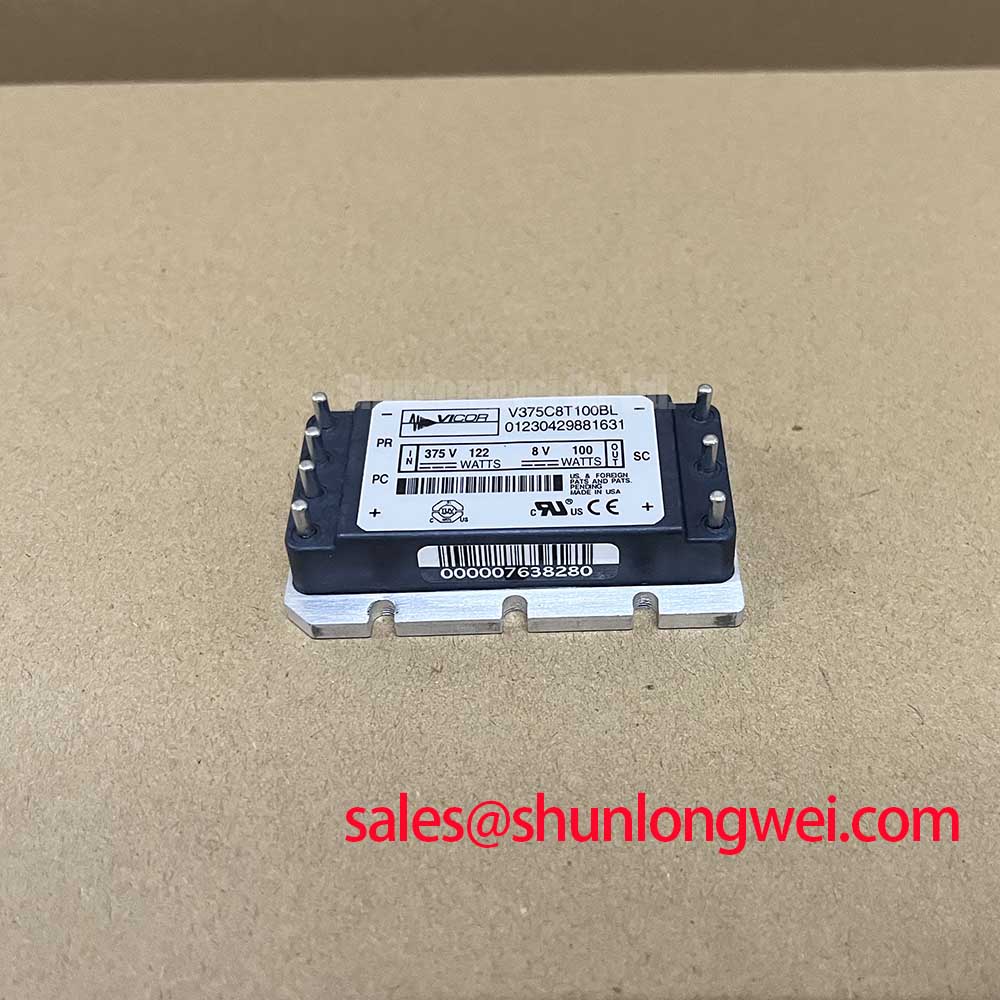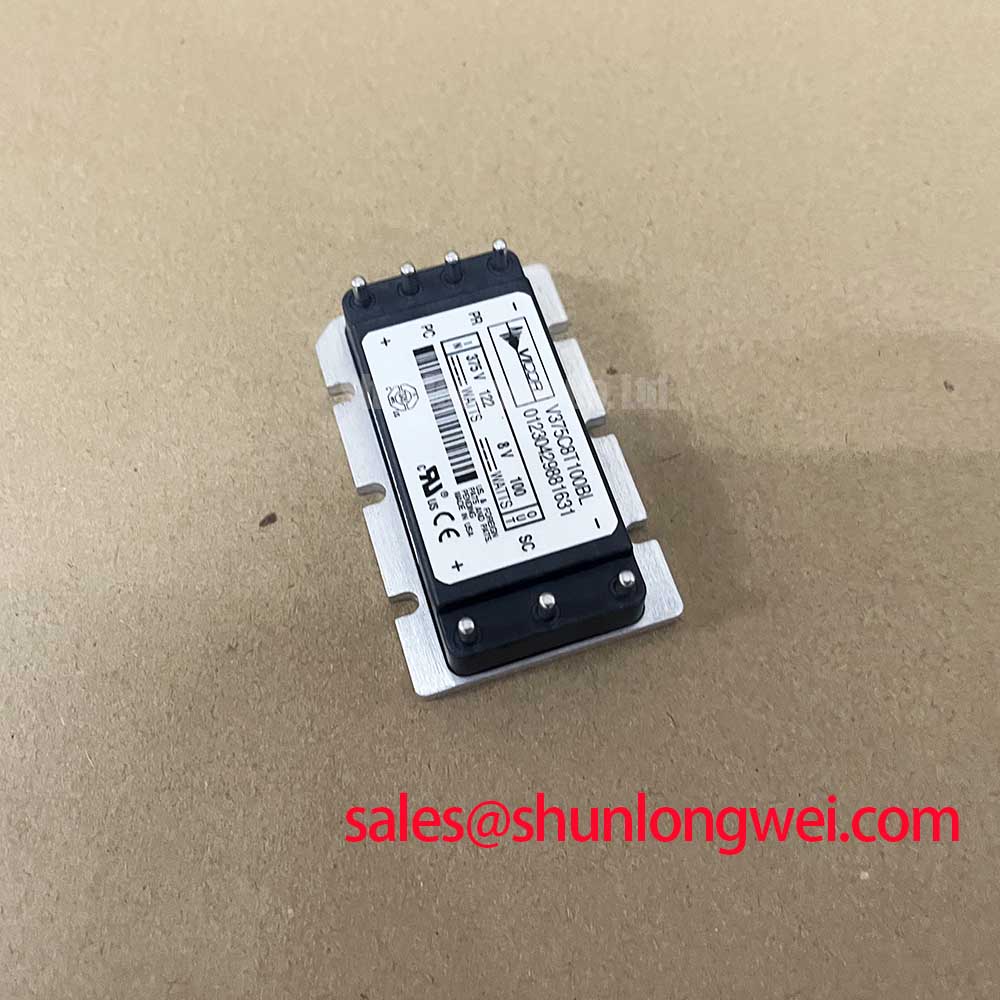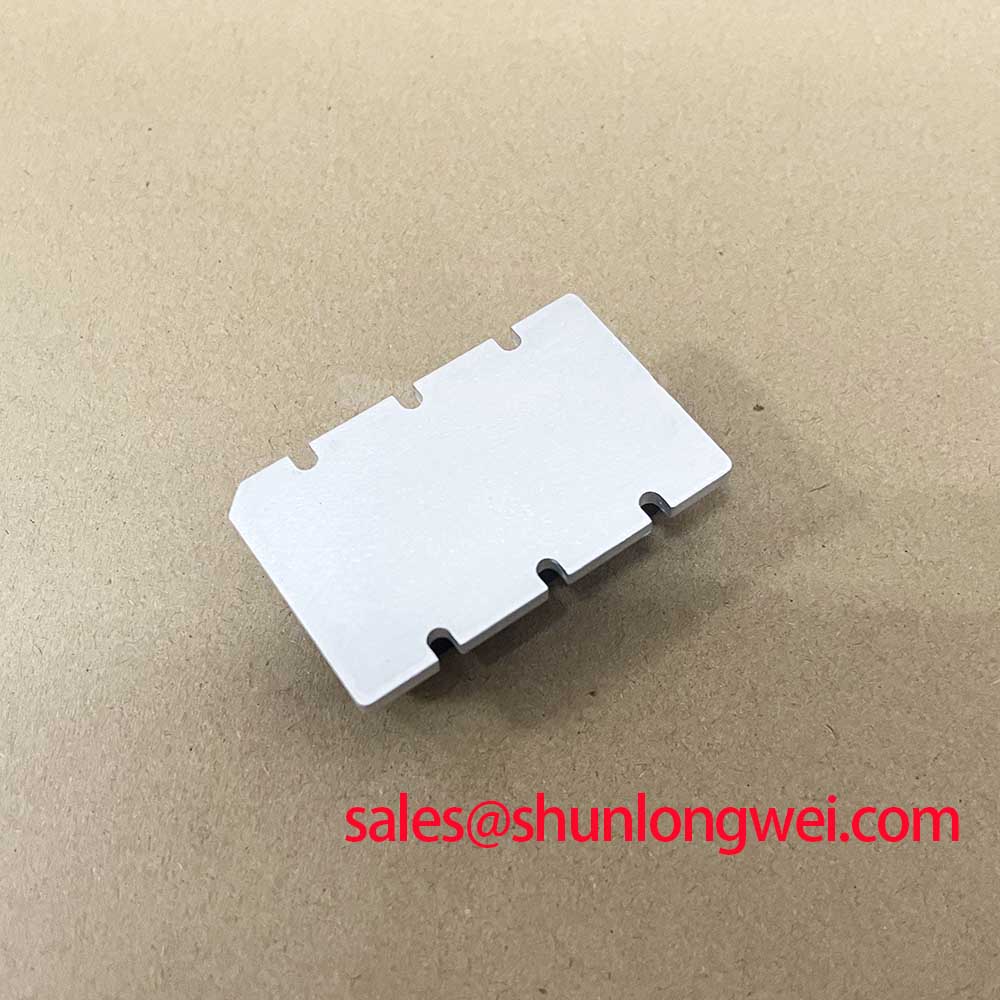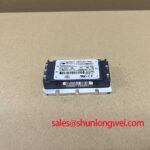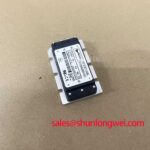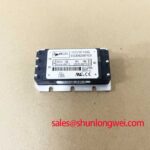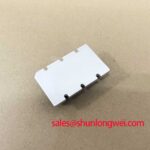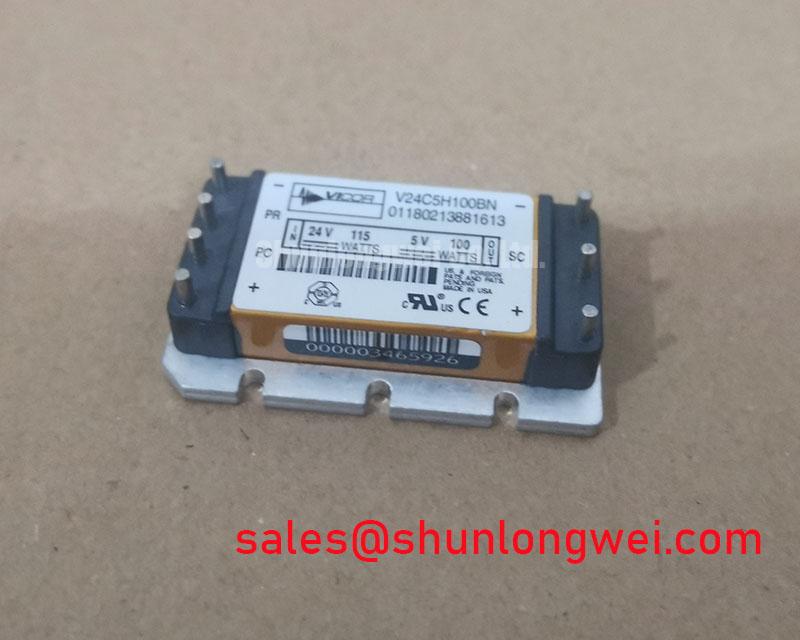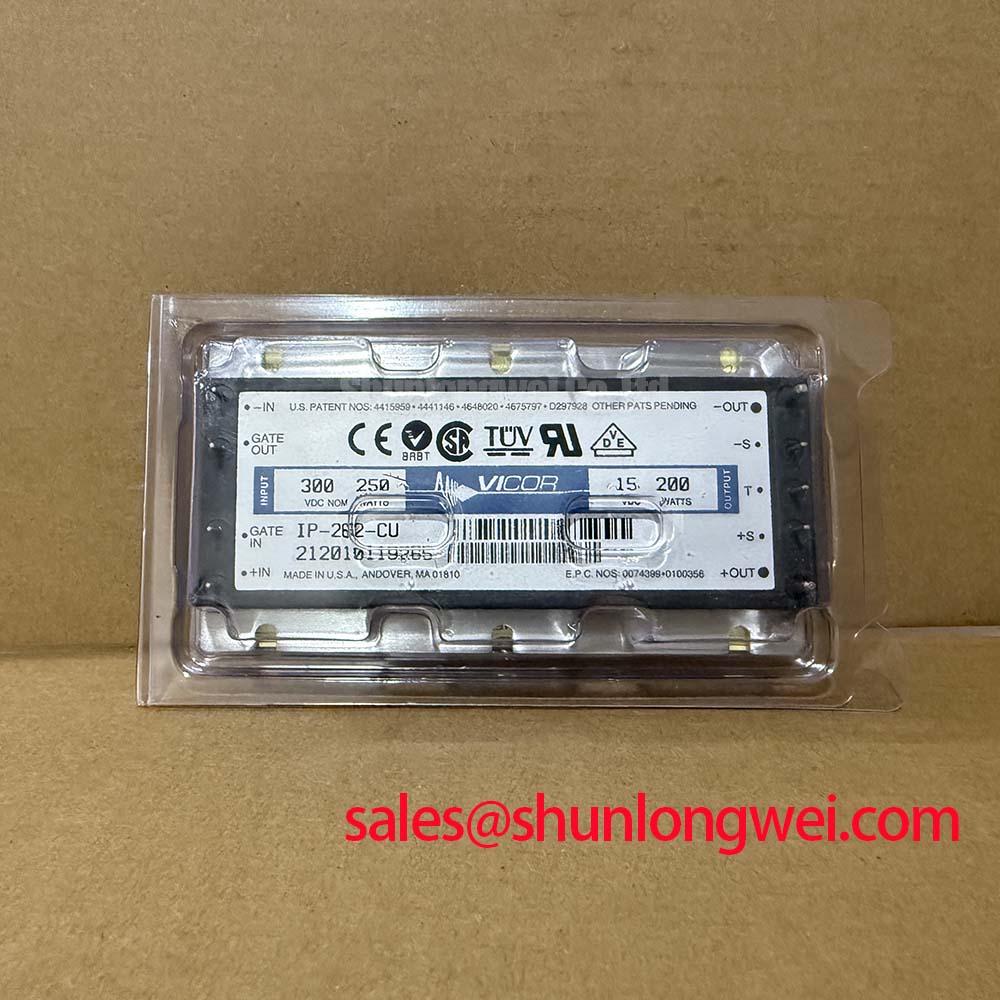Vicor V375C8T100BL DC-DC Converter Module Analysis
High-Density Power Conversion for Accelerated System Design
The Vicor V375C8T100BL delivers a complete, high-density DC-DC conversion solution, streamlining the design of complex industrial and distributed power systems. It offers a precisely regulated 8V output from a wide high-voltage input, integrating advanced control features that simplify board-level engineering and reduce time-to-market. This module is engineered for applications where space is at a premium and design cycle speed is a critical factor.
Deconstructing the V375C8T100BL's Integration-Ready Architecture
At the core of the Vicor V375C8T100BL is a design philosophy centered on simplifying the engineer's task. The module's architecture is built around a high-frequency Zero-Current and Zero-Voltage Switching (ZCS/ZVS) topology. This advanced switching method is crucial for system integration as it inherently generates significantly lower high-frequency noise compared to conventional hard-switching converters. What is the primary benefit of its ZCS/ZVS architecture? It drastically simplifies the design and component count of the required EMI filtering network, which is often a complex and iterative part of the system design process. This directly translates to a faster path to regulatory compliance and a more compact final product. Furthermore, the module's wide input voltage range of 250V to 425V DC allows it to operate from various high-voltage DC buses, such as those found in PFC front-ends or battery systems, without requiring additional pre-regulation stages. This flexibility simplifies the power chain and reduces overall system complexity.
V375C8T100BL Technical Specifications for Rapid Integration
The technical characteristics of the V375C8T100BL are tailored to facilitate straightforward implementation in demanding applications. The following table highlights key parameters and their direct impact on system design. For a complete list of specifications, please download the official datasheet.
| Parameter | Value | Engineering Significance |
|---|---|---|
| Input Voltage Range | 250 – 425 VDC | Provides design flexibility to accommodate a wide range of high-voltage DC sources, simplifying inventory and system-level power architecture. |
| Output Power | 100W | Delivers substantial power in a minimal footprint, enabling power-dense solutions without complex thermal management. |
| Power Density | Up to 90 W/in³ | This high power density is like having a more powerful engine in a smaller chassis; it allows designers to shrink the overall size of the end equipment or add more functionality in the same space. |
| Programmable Output | 10% to 110% of Nominal | Allows for fine-tuning of the output voltage via a single external resistor, eliminating the need for additional regulation circuitry for custom voltage requirements. |
| Logic Disable | TTL Compatible | Enables simple on/off control of the module using standard logic signals, simplifying system power sequencing and fault management. |
Data for Decision-Making: V375C8T100BL Parameter Comparison
When evaluating power components, a direct comparison of datasheet values provides the necessary data for an informed decision. This module is one part of Vicor's extensive Micro family of DC-DC converters, which offers a range of output voltages and power levels in the same footprint. The V375C8T100BL is specifically designed for a nominal 375V input bus, providing a regulated 8V, 100W output. Engineers evaluating alternatives for different output requirements might consider other modules within this series that leverage the same core topology and package, thereby maintaining mechanical and thermal design consistency across a product platform. This approach supports a modular design strategy, where different system configurations can be created by substituting pin-compatible converters without redesigning the entire power stage. For a detailed guide on power module selection, exploring topics like thermal performance is highly beneficial. You can learn more by reading about why thermal resistance is a critical parameter in power design.
The Strategic Value of Modular DC-DC Conversion
The adoption of modular components like the V375C8T100BL represents a strategic shift in how high-reliability electronic systems are developed. By abstracting the complexity of power conversion into a pre-certified, highly integrated block, engineering teams can reallocate resources from discrete power supply design to core application development. This modularity is a key enabler for faster product cycles and reduces the risk associated with custom power designs, especially in markets like industrial automation, ATE, and defense, where reliability and time-to-market are paramount. The use of pre-engineered modules aligns with the trend towards Power module-based distributed power architectures, which enhance system scalability and maintainability.
In Action: Simplifying a High-Voltage Control System
Consider the design of a compact industrial actuator controller powered from a 400V DC bus. A traditional approach would require a discrete design involving a transformer, switching FETs, control IC, and extensive filtering and protection circuits. By contrast, integrating the V375C8T100BL reduces this entire power stage to a single component. How does the V375C8T100BL save board space? By delivering 100W of power from a compact 2.28" x 1.45" package, it frees up significant PCB real estate for other critical functions. The integrated remote sense and output trim features ensure tight voltage regulation directly at the load, compensating for voltage drops and enhancing system precision without extra operational amplifiers or feedback networks.
Core Applications Enabled by Simplified Power Design
The feature set of the V375C8T100BL makes it a strong candidate for a variety of applications where design simplification and reliability are key objectives. Its ability to provide isolated, regulated low-voltage power from a high-voltage source is fundamental in many modern electronic systems.
- Industrial Process Control: Powering sensors, local logic, and communication interfaces within larger machinery operating on a high-voltage DC bus.
- Distributed Power Architectures: Serving as a local point-of-load (PoL) converter in systems that distribute high-voltage DC to minimize I²R losses over long distances.
- Automated Test Equipment (ATE): Providing clean, adjustable power for device-under-test (DUT) cards, where fast reconfiguration and high density are essential.
- Aerospace and Defense: Used in non-flight-critical systems that require robust, high-density power conversion from an onboard DC bus.
For space-constrained industrial systems with a 375V nominal bus, this module's power density of up to 90W/in³ is a decisive factor for miniaturization.
Technical Inquiries on the V375C8T100BL
How does the ZCS/ZVS topology in the V375C8T100BL help with EMI compliance?The zero-current and zero-voltage switching (ZCS/ZVS) technique ensures that the internal power switch turns on and off when either the voltage across it or the current through it is zero. This minimizes the abrupt changes in voltage (dV/dt) and current (dI/dt) that are the primary sources of high-frequency electromagnetic interference (EMI) in traditional converters. By reducing noise at the source, it lessens the burden on external filtering components, simplifying the design and validation process for standards like EN 62368-1.
What is the purpose of the 'SC' (Secondary Control) pin?The SC pin is a multi-function input that serves as the primary interface for output voltage programming. By connecting a single external resistor between the SC pin and the -OUT pin, the output voltage can be trimmed from 10% to 110% of its nominal 8V value. This feature provides significant flexibility, allowing the same module to be used for various voltage requirements without hardware changes.
Can I parallel multiple V375C8T100BL modules for higher power output?Yes, the module is designed for parallel operation to achieve higher power or for N+M redundancy. It includes a single-wire parallel bus (PR pin) that allows modules to share current effectively. When paralleling, it is important to follow the manufacturer's guidelines outlined in the application notes to ensure balanced load sharing and stable operation, especially regarding layout and thermal management.
What is the difference between remote sense and the local sense connection?Local sensing measures the voltage directly at the module's output pins. Remote sensing, using the +S and -S pins, allows the module to measure and regulate the voltage directly at the load. This compensates for any voltage drop that occurs across PCB traces or wiring between the module and the load point. For applications demanding high precision, remote sensing is critical for maintaining tight output voltage accuracy. For further reading, an overview of power semiconductors can be found in this guide on component structures.
What are the key considerations for heatsinking a module with this power density?With a power density of up to 90 W/in³, effective thermal management is vital. The module's baseplate is the primary thermal interface and must be mounted to an appropriate heatsink or a thermally conductive chassis. Key considerations include ensuring a flat mounting surface, using a quality thermal interface material (TIM) to minimize contact resistance, and ensuring the mounting torque is within the specified 5 in-lbs (0.57 N-m) to prevent mechanical stress. The heatsink's performance should be calculated to keep the baseplate temperature below the 100°C maximum operating limit under worst-case ambient temperature and load conditions.
Future-Proofing Designs with Modular Power
As system requirements evolve towards greater efficiency, smaller footprints, and shorter development timelines, the architectural choice of power conversion becomes a defining factor. Integrating a component like the Vicor V375C8T100BL is not merely a component selection; it is an engineering decision that prioritizes design agility. By leveraging a pre-validated, high-density power module, designers can focus on system-level innovation, confident in the underlying power foundation. This approach allows for faster adaptation to changing market demands and provides a scalable platform for future product generations.

